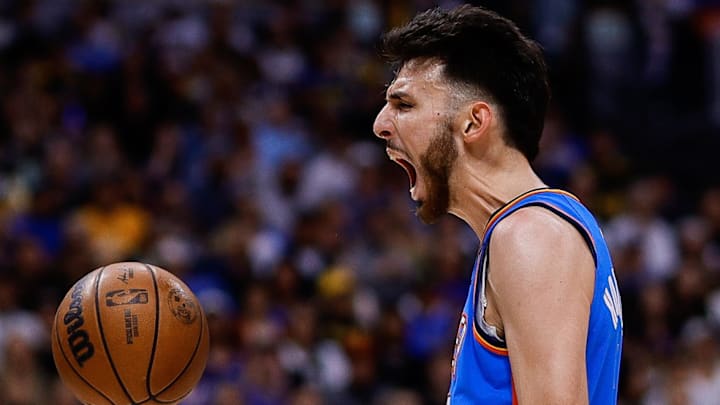During a recent edition of the Game Theory podcast, hosts Sam Vecenie and Bryce Simon broke down their rankings of the top 25 defenders in the NBA. To no one's surprise, the OKC Thunder had multiple representatives make the cut, with the highest-ranked being big man Chet Holmgren.
A major part of Oklahoma City's historically dominant defensive punch last year, the 23-year-old contested 93 percent of opponent shot attempts as the closest defender, the second-best mark in the league since the start of last season, and allowed opponents to shoot just 33 percent from the floor (minimum 40 shots defended), the lowest on the season.
In just two active years, Holmgren has established himself as being right up there with the likes of Victor Wembanyama and Evan Mobley as one of the most dominant frontcourt defenders the game currently has to offer.
Now, following the Thunder's 2024-25 championship run, there's a case to be made that he has even found a way to make himself all the more ferocious and impactful on the less glamorous side of the ball, as Simon gushed over Chet's defensive rebounding improvements, something that he believes played a vital yet less buzzed about role in the club taking home the Larry O'Brien Trophy.
Thunder big Chet Holmgren has improved defensive rebounding skills
As pointed out by Simon, Holmgren's defensive rebounding production per 100 possessions increased by over one board per game from year one to year two (10.3 in 2023-24 to 11.4 in 2024-25).
To Simon, this improvement was huge for the Thunder's success, especially during their eventual championship run in the postseason, and the numbers only back this claim up.
Throughout the playoffs, the Thunder pulled down 20.4 defensive rebounds with Holmgren on the hardwood and just 11.7 with him sidelined, a sizeable difference of 8.7. This discrepancy would only become more evident as the postseason went on, with the difference ballooning to 11.5 in on/off metrics during the NBA Finals.
It should come as no surprise that the Thunder let up just 9.6 second-chance points per game with Holmgren on the floor during the playoffs.
While many may primarily focus on things like blocked shots, steals, and opponent field goal percentage as key statistical categories to determine a player's worth on the defensive end, as Simon pointed out, an ability to pull down defensive rebounds and limit follow-up scoring looks is just as valuable.
Holmgren has seemingly found a way to improve in this incredibly under-the-radar area of defensive play.
